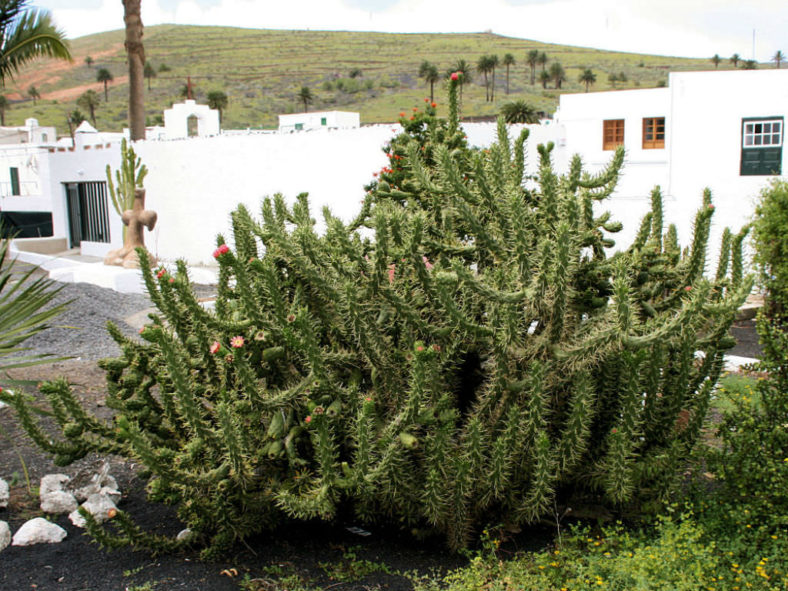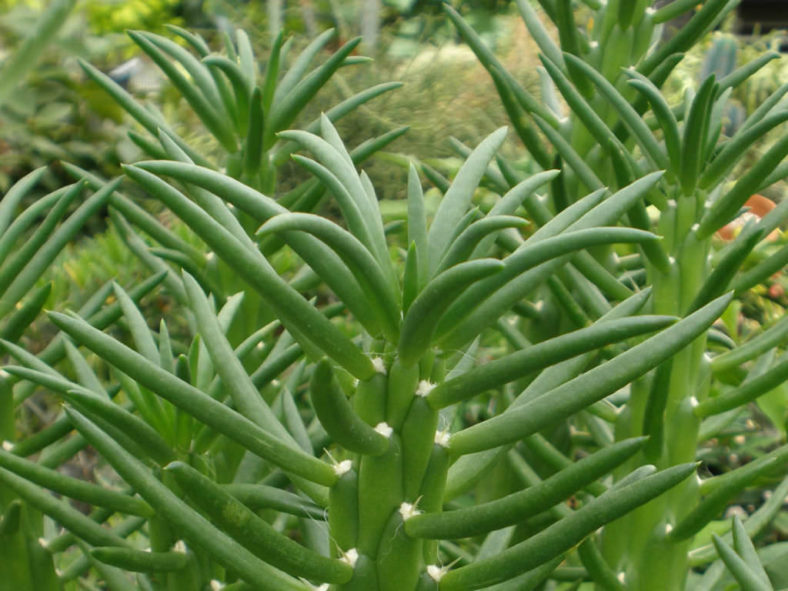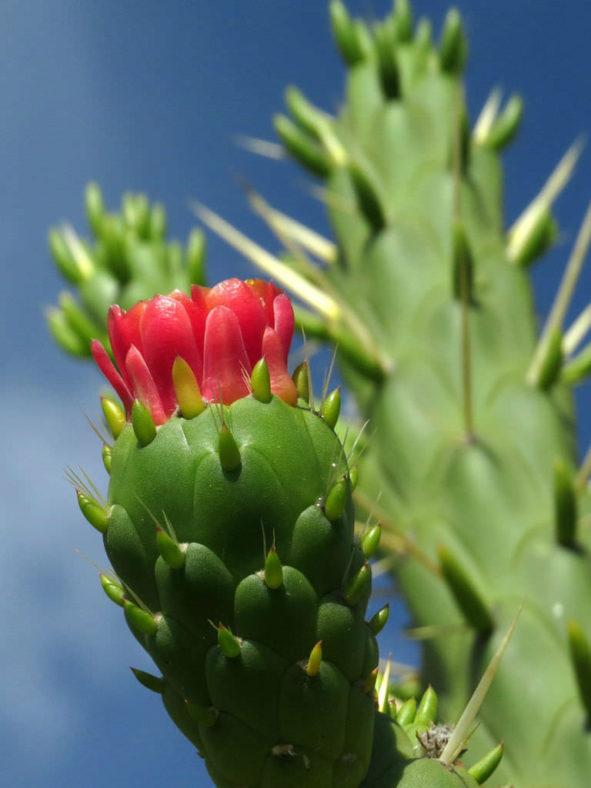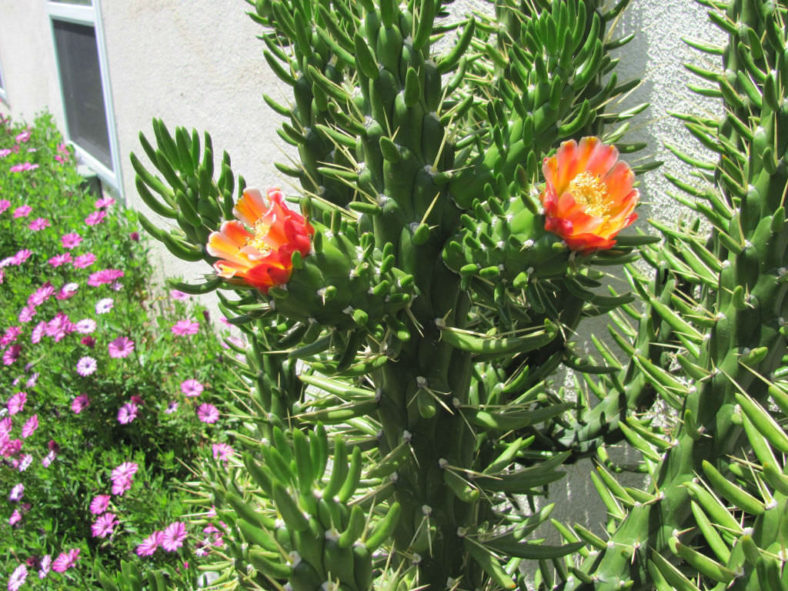Scientific Name
Austrocylindropuntia subulata (Muehlenpf.) Backeb.
Common Name(s)
Eve's Needle Cactus, Eve's Pin Cactus, Long Spine Cactus
Synonym(s)
Austrocylindropuntia exaltata, Opuntia exaltata, Cylindropuntia exaltata, Opuntia subulata, Cylindropuntia subulata, Pereskia subulata
Scientific Classification
Family: Cactaceae
Subfamily: Opuntioideae
Tribe: Austrocylindropuntieae
Genus: Austrocylindropuntia
Etymology
The specific epithet "subulata" (pronounced "sub-yoo-LAH-tuh") means "awl-shaped" and refers to the shape of the rudimentary leaves of this species.
Origin
Austrocylindropuntia subulata is native to the higher elevations of Ecuador and Peru.
Description
Austrocylindropuntia subulata is a tree-like cactus with a trunk and numerous cylindrical branches with rhomboid to ovate tubercles in a few spiral rows. It can grow up to 13 feet (4 m) tall. The trunk can reach a diameter of 4 inches (10 cm), while the branches can grow up to 2 feet (60 cm) long and 2.5 inches (6.5 cm) in diameter. The leaves are green, nearly cylindrical, and can measure up to 5 inches (12.5 cm) long. The spines are light yellow, 1 to 2 per areole, and can grow up to 3 inches (7.5 cm) long.
The flowers can reach a length of up to 4 inches (10 cm) and range in color from burgundy-red, orange-red, or orange to greenish-yellow. They have white bases and a yellow stigma. The fruits are ovoid to club-shaped and can grow up to 4 inches (10 cm) long.
Forms and Cultivars
- Austrocylindropuntia subulata f. cristata
- Austrocylindropuntia subulata f. monstruosa
- Austrocylindropuntia subulata 'Gumby'

Hardiness
USDA hardiness zones 9a to 11b: from 20°F (-6.7°C) to 50°F (10°C).
How to Grow and Care
Though the large variety of species within the Opuntia genus means different Prickly Pears may need slightly different care, all are desert cacti requiring lots of sun, light, and very little water. So if you live in a hot, arid area, these plants can generally be planted outside, left alone, and enjoyed.
As desert cacti, Prickly Pears require maximum sunlight to thrive. Therefore, they should be kept in direct sunlight whenever possible. Very little water is needed. These drought-resistant plants grow best in hot, dry areas, and excessive water could cause them to rot. Hot temperatures are best, but these cacti will tolerate a wide range of temperatures. The most important soil requirement for Opuntia is that it drains well. Besides that, basic potting soil is fine, and these cacti will also grow in rock gardens.
Though Opuntia will grow just fine in a garden, they can also be grown in pots. To repot, ensure the soil is dry, remove the pot, and knock away the old soil. After treating any cuts with fungicide, place the prickly pear in a new pot and backfill it with potting soil. As with a new cutting, ensure not to briefly water a newly repotted prickly pear to avoid rotting its roots.
See more at How to Grow and Care for Opuntia.
Links
- Back to genus Austrocylindropuntia
- Succupedia: Browse succulents by Scientific Name, Common Name, Genus, Family, USDA Hardiness Zone, Origin, or cacti by Genus
Photo Gallery
Click on a photo to see a larger version.


